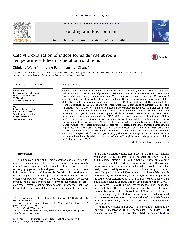摘要
A numerical model for simulating the performance of a dynamic botanical filtration system has been developed for the first time. The model accounts for the various transport and storage processes including air and contaminant convection, adsorption of non-water soluble compound by activated carbon, absorption of water soluble compound by water, bio-degradation of chemicals by microbes in the root bed as well as the automatically controlled irrigation system for the root bed. The model was built upon an existing Coupled Heat, Air, Moisture and Pollutant Simulation for Building Envelope System (CHAMPS-BES) model with the addition of bio-degradation process and the irrigation system. Model parameters were estimated from the experiments. The simulation results showed that the model could describe the pressure drop and airflow relationship well by using the air permeability as a model parameter. The water source added in the model also led to the similar bed moisture content and outlet air RH as that in real test case. The simulation results also showed that the developed model worked well in analyzing the effect of different parameters. It was also found that the critical bio-degradation rate constant was 1 x 10(-5) s(-1) in this study, below which the dynamic botanical filtration system would not be able to sustain the formaldehyde removal performance. The bio-degradation rate constant of the reduced scale filter system tested was estimated to be in the range of 0.8-1.5 x 10(-4) s(-1).
- 出版日期2012-8
- 单位天津大学
